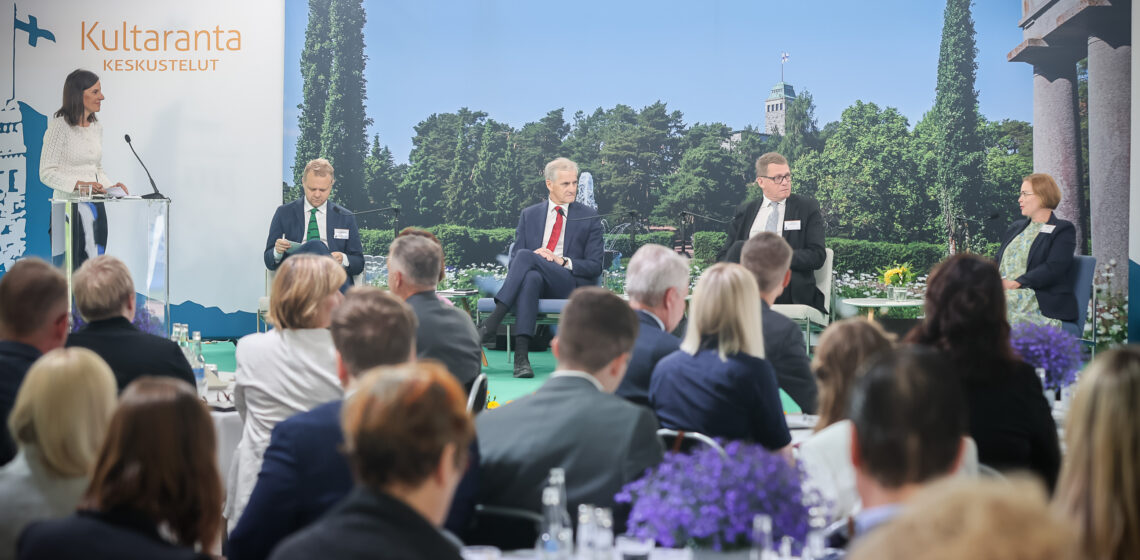The second day of Kultaranta Talks on 13 June started with a discussion about the Nordic model and security. The panellists included Speaker of Parliament Matti Vanhanen, Prime Minister of Norway Jonas Gahr Støre, Programme Director at the Swedish Institute of International Affairs Björn Fägersten, and Programme Director at the Finnish Institute of International Affairs Katja Creutz. The discussion was moderated by journalist Kirsi Heikel.
The issues highlighted in the discussion included the Nordic co-operation and the opportunities to deepen it further as Finland and Sweden join NATO, and the joint Nordic crisis readiness. The panellists came to the conclusion that the Nordic Countries share the same values, but so far, they have had very different solutions regarding security.
The Speaker of Parliament Matti Vanhanen hoped that, in the future, the Nordic Countries would use their voice as NATO members. According to the speaker, we are now talking about Nordic co-operation more than over the past few decades.
Norwegian Prime Minister Jonas Gahr Støre shared Norway’s experiences as a NATO member with a shared border with Russia. It has been important for Norway to keep the tensions low in the north. “We should seize the opportunities for co-operation whenever this is possible – when it isn’t, it is just better to stay calm,” Støre said. Prime Minister Støre also brought up the increasingly close link there is between energy and climate issues and foreign and security policy.
Programme Directors Björn Fägersten from the Swedish Institute of International Affairs and Katja Creutz from the Finnish Institute of International Affairs considered the speed at which the public opinion changed in Finland and Sweden concerning the NATO issue amazingly fast. Creutz referred to the different approaches to the pandemic between the Nordic countries and hoped that we learned something from the crisis.


